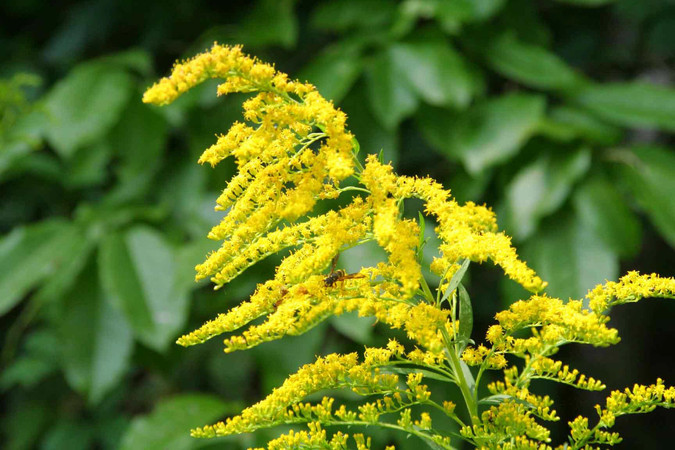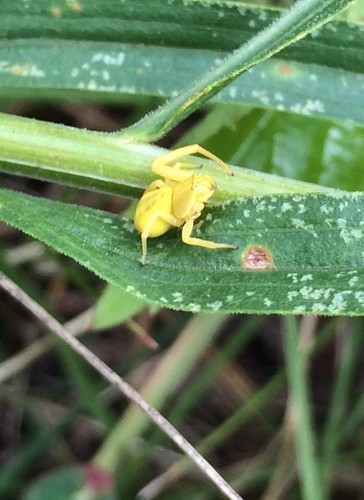The Wrack
The Wrack is the Wells Reserve blog, our collective logbook on the web.
The Wrack is the Wells Reserve blog, our collective logbook on the web.
 Goldenrods are coming. You need not look far to see this harbinger of summer’s end. It's blooming in every field and roadside.
Goldenrods are coming. You need not look far to see this harbinger of summer’s end. It's blooming in every field and roadside.
There are 19 species of goldenrod native to Maine that begin blooming in August and continue through fall. Allergy sufferers have maligned this beautiful plant as the source of their misery, but goldenrod, with its large, heavy, sticky pollen grains, is pollinated by insects and not by wind. The real culprit of our itchy eyes and runny noses is ragweed, which blooms at the same time and is pollinated by wind. Ambrosia artemisiifolia, common ragweed, is too elegant a name for the source of our misery, in my opinion.
The name for goldenrod, Solidago, comes from the Latin word solidus, meaning “whole,” which is believed to refer to goldenrod’s healing properties. Native Americans, pioneers, and herbalists have used this herb to treat inflammation, urinary tract infections, arthritis, skin conditions, as an antiseptic, and many other purposes. Recent discoveries have found goldenrod to be an effective remedy for kidney stones and to staunch the flow of blood.
Goldenrod folklore abounds. When the colonists dumped all their much-loved tea into Boston Harbor, then wondered what they were thinking, they discovered that brewed leaves of American goldenrod produced excellent tea. There is also the legend of two beautiful girls, one blonde and one with dark hair and blue eyes, who visited a witch one day and asked always to be together. The girls were never seen again, but wherever you see the bright yellow hair of goldenrod, you’ll see the blue-eyes of aster close by.
Solidago is used by many species of butterfly and moth larvae. Pollinators attracted to the sticky pollen grains include native solitary bees and bumblebees, butterflies, wasps, beetles, and spiders. Goldenrod is a great plant for the garden but needs a close eye, as it can be aggressive.

One of my favorites is the crab spider, which hides in the flowers ready to ambush insect passersby. The crab spider’s front legs are longer than its back legs and are held open so the spider can easily grab its prey. These arthropods walk backwards or sideways on their back legs, which is where they get their name. Goldenrod crab spiders can change color depending on the flower where they silently await their prey.